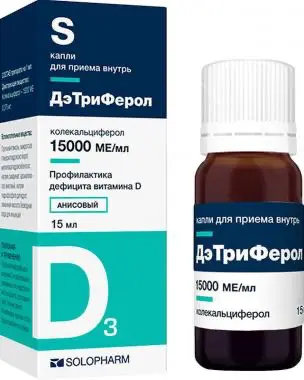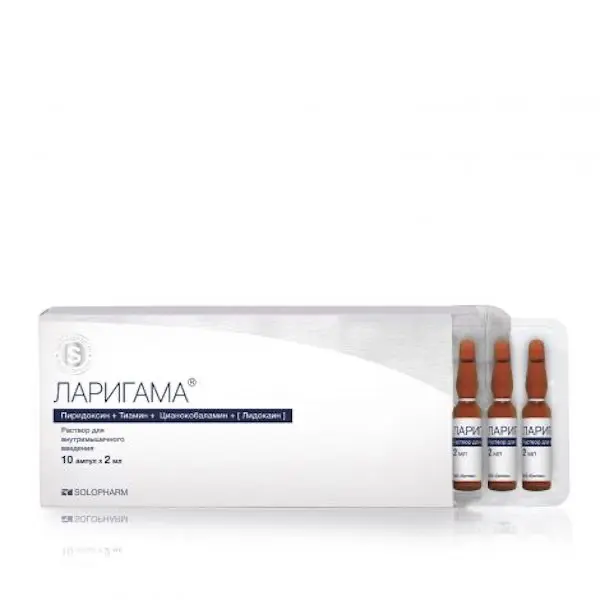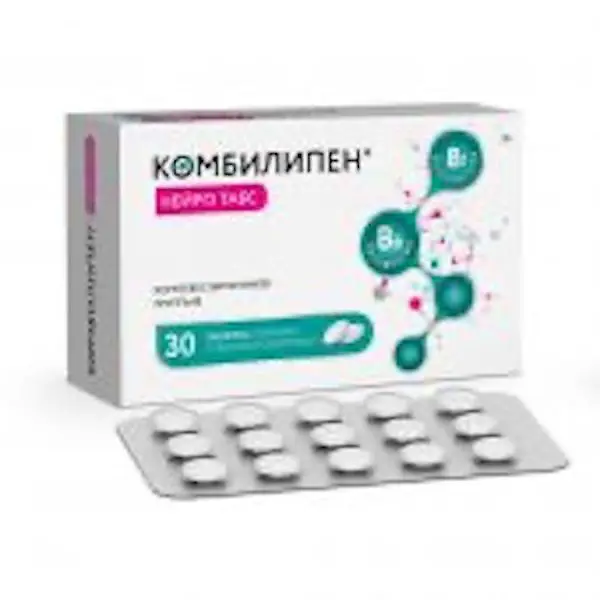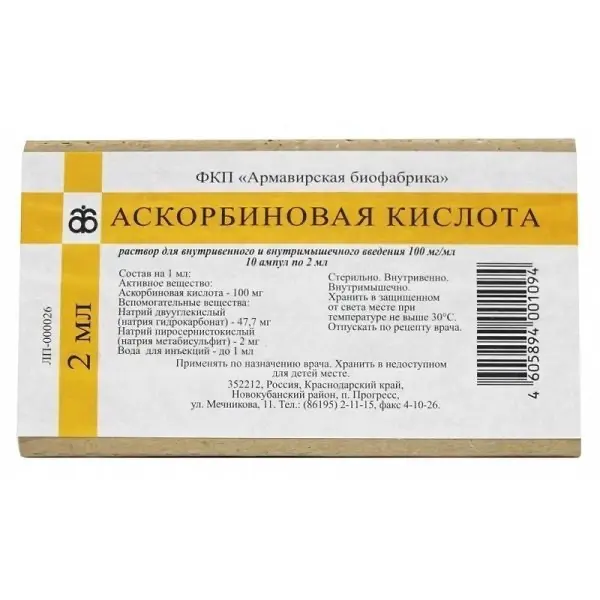Description
DeTriFerol Pharmacodynamics
Vitamin D3 is a natural form of vitamin D, which is formed in the human skin under the influence of sunlight. Compared with vitamin D2 is characterized by 25% higher activity.
Vitamin D3 is an active anti-rachitis factor. The most important function of vitamin D3 is to regulate calcium and phosphate metabolism, which promotes proper mineralization and skeletal growth.
Colecalciferol plays an essential role in the absorption of calcium and phosphate in the intestine, in the transport of mineral salts and in the calcification of bones, and regulates the excretion of calcium and phosphate by the kidneys.
The concentration of calcium ions in the blood is responsible for maintaining muscle tone in the skeletal muscles, myocardial function, contributes to nerve stimulation, and regulates blood clotting.
Lack of vitamin D in food, impaired absorption, calcium deficiency, as well as lack of exposure to the sun during rapid growth of the child leads to rickets, in adults – to osteomalacia, pregnant women may show symptoms of tetany, disruption of bone calcification in newborns.
Increased need for vitamin D occurs in women during menopause, because they often develop osteoporosis due to hormonal disorders. Vitamin D has a number of so-called extracellular effects.
Vitamin D is involved in immune system functioning by modulating cytokine levels and regulates T-helper lymphocyte division and B-lymphocyte differentiation. A number of studies have noted a reduction in the incidence of respiratory tract infections on the background of vitamin D supplementation.
Vitamin D has been shown to be an important link in immune system homeostasis: it prevents autoimmune diseases (type 1 diabetes, multiple sclerosis, rheumatoid arthritis, inflammatory bowel disease, etc.).
Vitamin D has antiproliferative and prodifferential effects, which determine the oncoprotective effect of vitamin D. It was noted that the incidence of some tumors (breast cancer, colon cancer) increases with low levels of vitamin D in the blood.
Vitamin D is involved in the regulation of carbohydrate and fat metabolism by influencing the synthesis of IRS1 (insulin receptor substrate 1; participates in intracellular insulin receptor signaling pathways), IGF (insulin-like growth factor; regulates fat and muscle tissue balance), PPAR-5 (activated peroxisome proliferator receptor type 5; helps recycle excess cholesterol). According to epidemiological studies, vitamin D deficiency is associated with the risk of metabolic disorders (metabolic syndrome and type 2 diabetes). Vitamin D receptors and metabolizing enzymes are expressed in arterial vessels, the heart and virtually all cells and tissues relevant to the pathogenesis of cardiovascular disease. Antiatherosclerotic effects, renin suppression and prevention of myocardial damage, etc., have been shown in animal models. Low levels of vitamin D in humans are associated with adverse cardiovascular risk factors such as diabetes, dyslipidemia, arterial hypertension, and are associated with the risk of cardiovascular accidents, including strokes.
In studies on experimental models of Alzheimer’s disease, vitamin D3 was shown to reduce amyloid accumulation in the brain and improve cognitive function. In non-interventional studies in humans, the incidence of dementia and Alzheimer’s disease has been shown to increase with low vitamin D levels and low dietary intake of vitamin D. There has been a worsening of cognitive function and the incidence of Alzheimer’s disease at low levels of vitamin D.
Indications
Prevention of vitamin D deficiency and diseases associated with its insufficiency (rickets, osteomalacia).
Treatment of rickets.
Complex therapy for osteoporosis of different genes.
Contraindications .
Hypersensitivity to colocalciferol and / or any of the excipients in the drug.
Hypervitaminosis of vitamin D.
Increased concentration of calcium in blood (hypercalcemia), increased excretion of calcium in the urine (hypercalciuria), urolithiasis (formation of calcium oxalate stones), renal osteodystrophy with hyperphosphatemia, pseudohypoparathyroidism.
Sarcoidosis.
Acute and chronic liver and kidney disease, renal failure.
Active form of pulmonary tuberculosis.
Childhood under 4 weeks of age.
Dosage and administration
- Orally.
- The drug is taken in a spoonful of liquid.
1 drop contains about 500 ME of vitamin D3. - Prevention of rickets:
Premature infants from 4 weeks of life – 1 drop (500 ME) per day; Premature infants from 4 weeks of life – 2 drops (1000 ME) per day for the first year of life, then 1 drop (500 ME) per day. - The drug should be used during the first two years of the child’s life, during periods of low insolation (especially in winter).
- Treatment of rickets:
If there are no visible deformities of the bones (slight degree of rickets) – 2 – 3 drops (1000-1500 ME) per day, the treatment should be continued for 30 days. - In the presence of bone deformities typical for medium and severe rickets – 4-8 drops (2000-4000 ME) per day, treatment should be continued for 30-45 days, the drug dose and duration of therapy depend on the severity of changes and determined by the doctor (see “Special indications”).
- Prevention of vitamin D deficiency and diseases associated with its insufficiency (osteomalacia):
1 drop (500 ME) per day for the entire period accompanied by vitamin D intake deficiency. Minimum duration of prophylaxis course is 1 month. - In the complex treatment of osteoporosis:
1 to 2 drops (500-1000 ME) per day for 3 months. Repeated courses of therapy are possible on doctor’s recommendation depending on the results of evaluation of markers of bone metabolism and calcium metabolism (see section “Special indications”).





